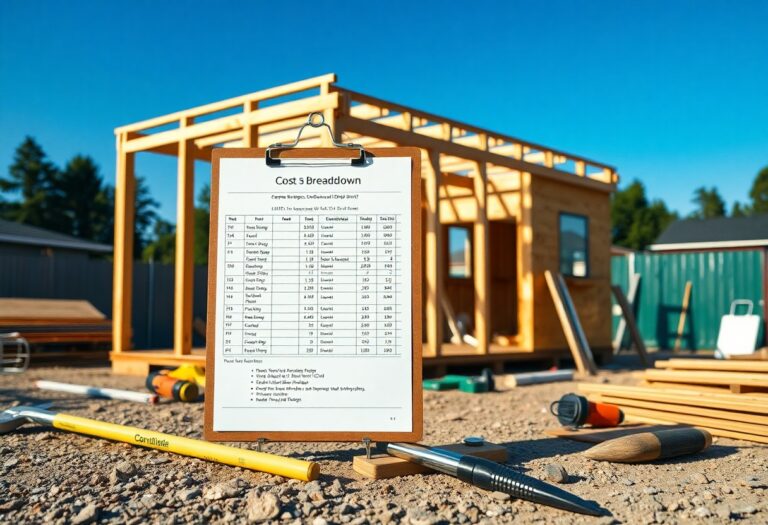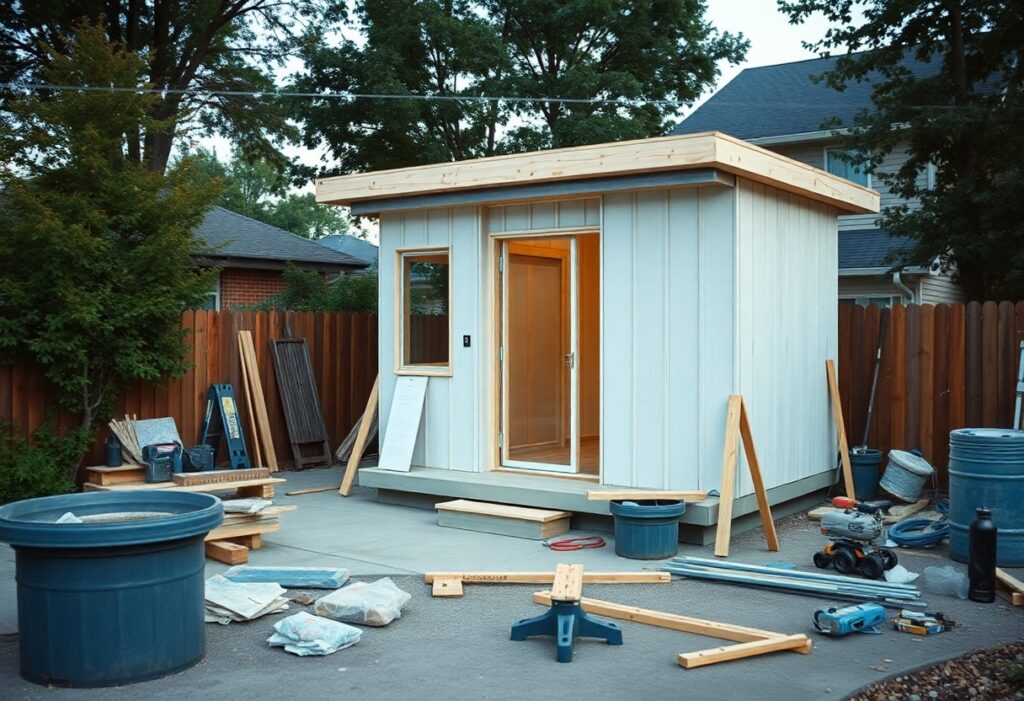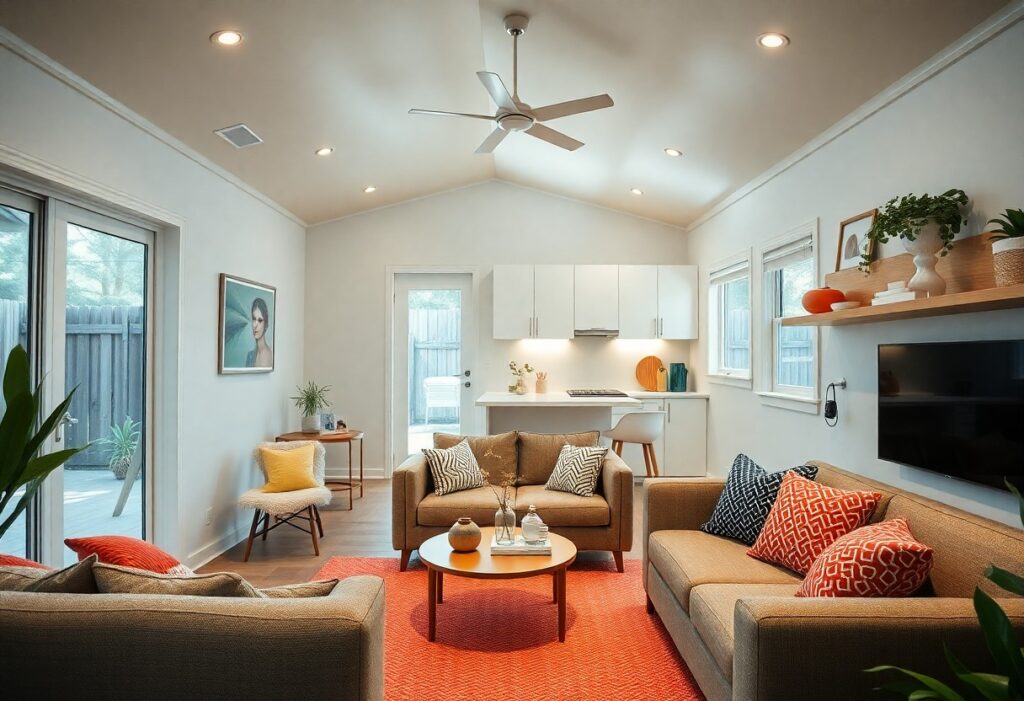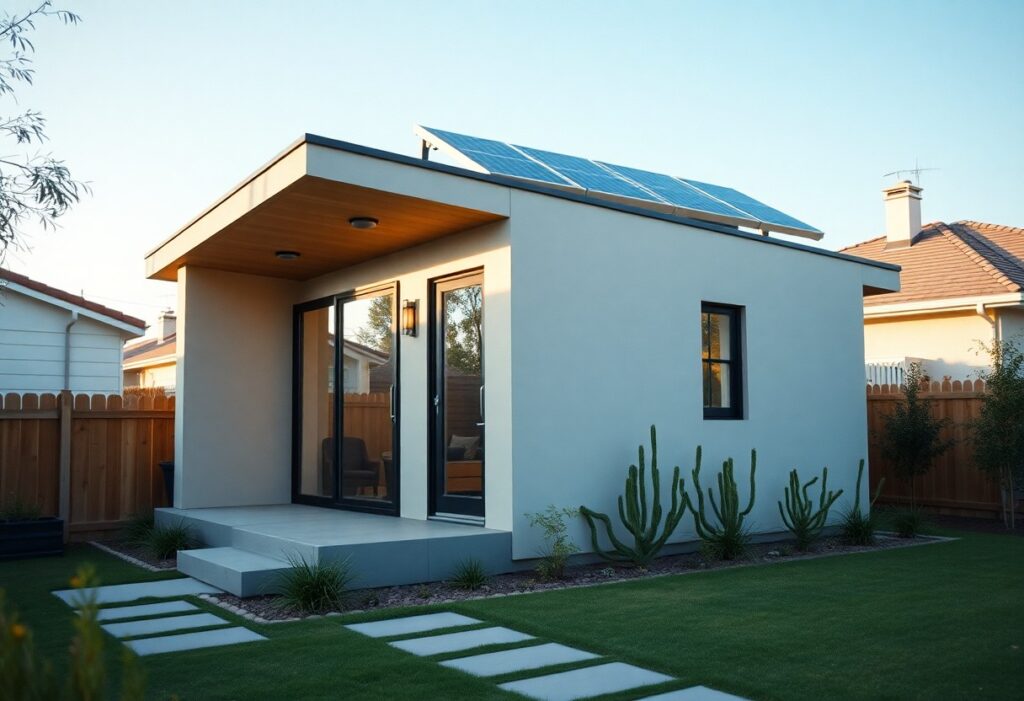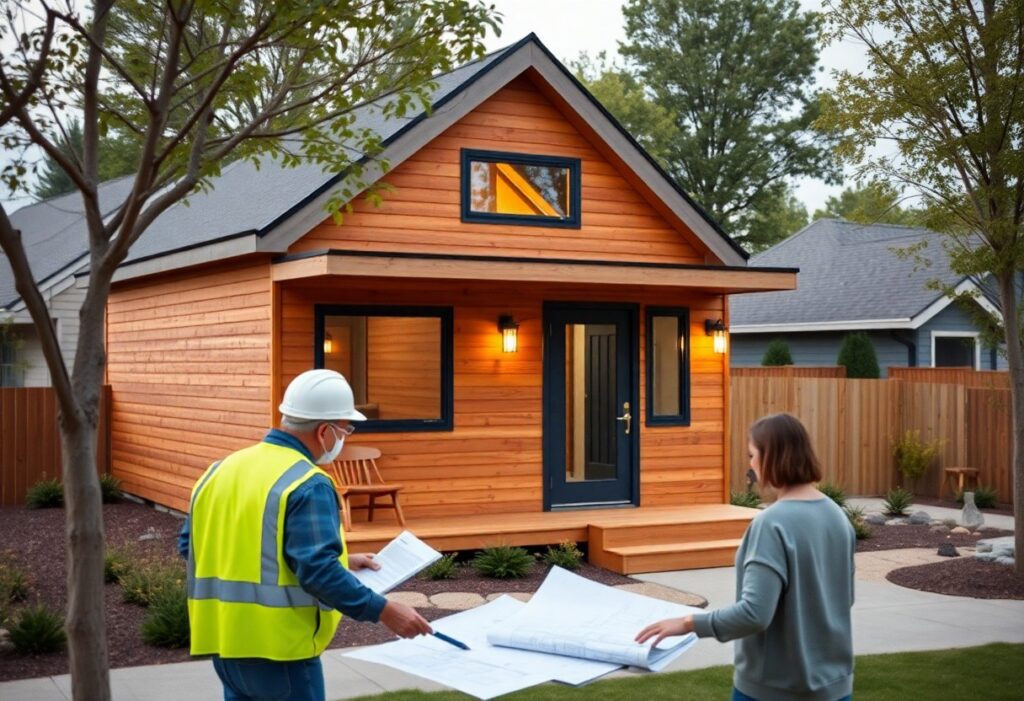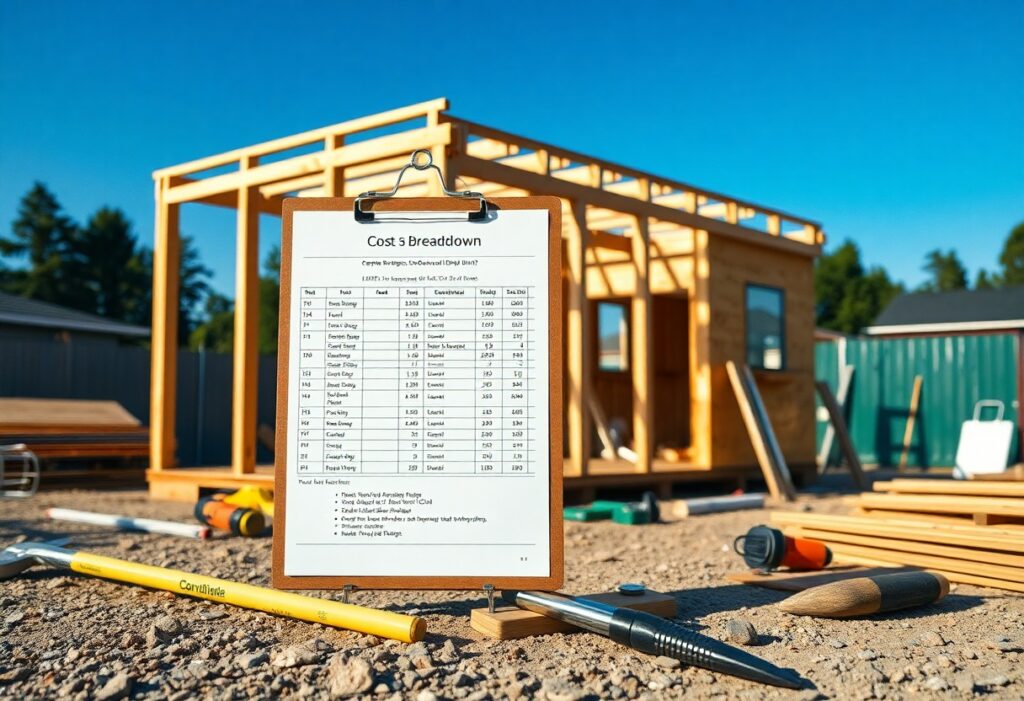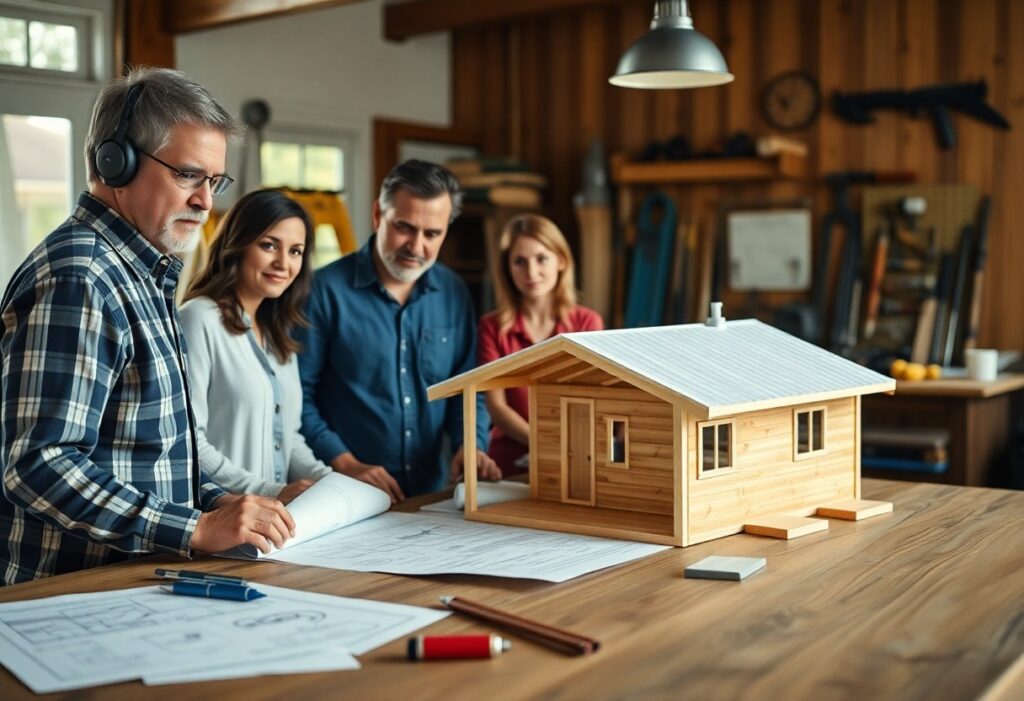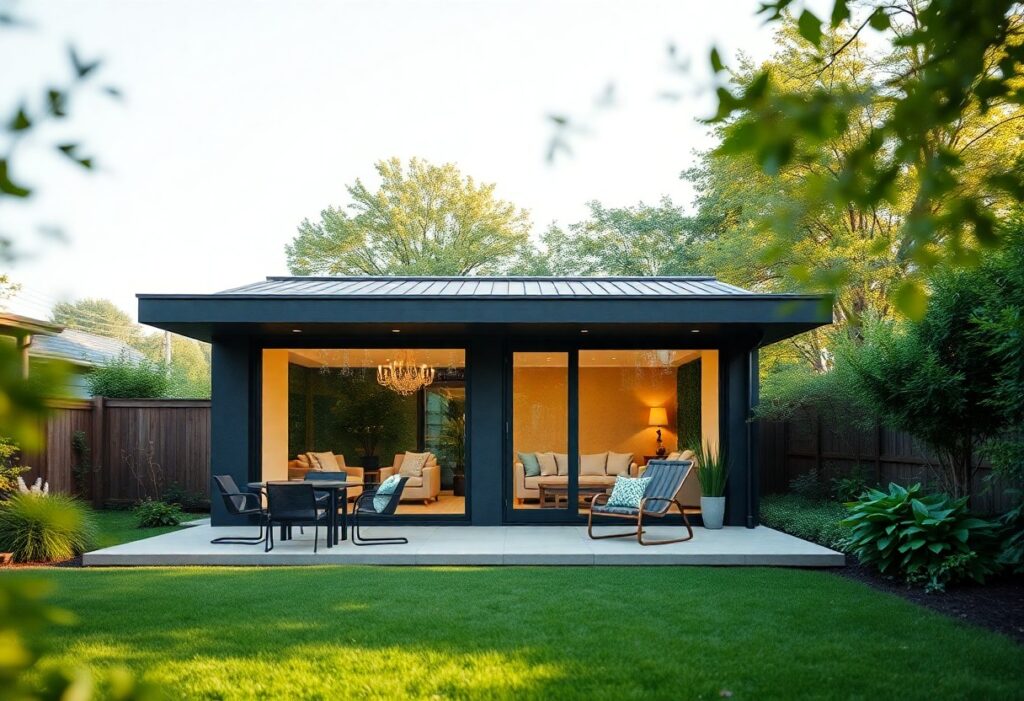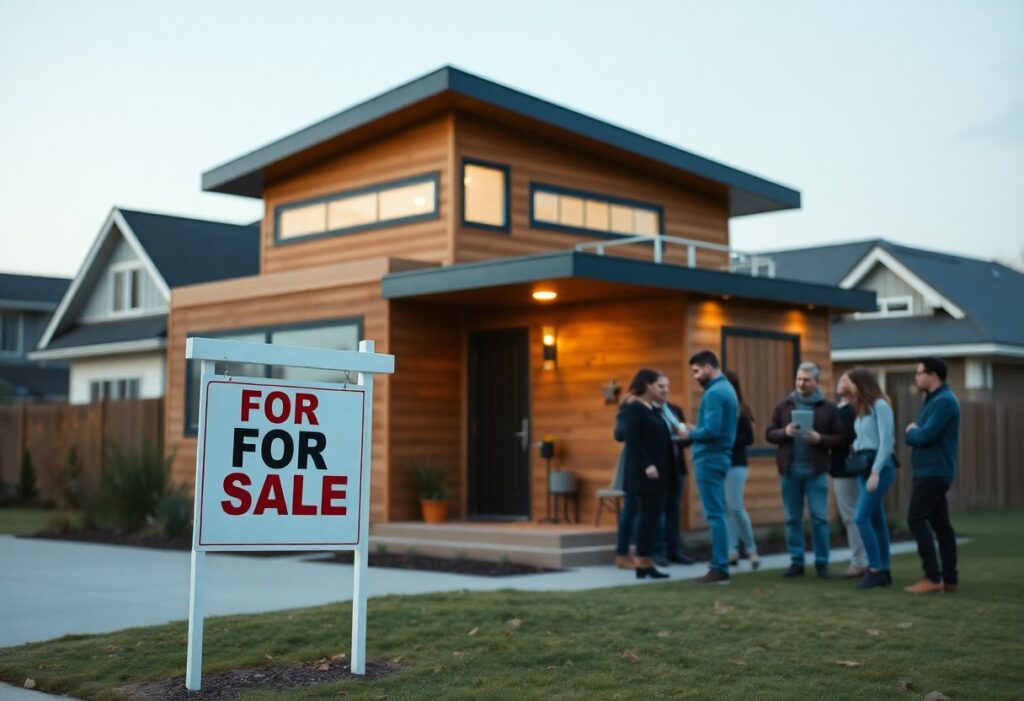Cost factors in building an Accessory Dwelling Unit (ADU) can vary widely, impacting your overall budget. You’ll need to consider construction materials, labor expenses, and local permits to get an accurate estimate. It’s also imperative to include expenses for landscaping and utilities in your planning. Understanding these costs upfront will help you avoid unexpected financial pitfalls and ensure that your project remains within budget. Equip yourself with this knowledge to make informed decisions as you begin on building your ADU.
Key Takeaways:
- Cost Estimates: The total cost of building an Accessory Dwelling Unit (ADU) can vary significantly based on size, design, and location, with prices typically ranging from $100,000 to $400,000.
- Permit Fees: Homeowners should factor in various permit and zoning fees, which can add several thousand dollars to the overall budget.
- Construction Costs: Material and labor expenses are often the largest portions of the budget, so obtaining multiple quotes from contractors is advisable.
- Site Preparation: Costs associated with site preparation, including grading, utility connections, and landscaping, should not be overlooked.
- Financing Options: Explore financing options such as home equity loans, construction loans, or local grants specifically available for ADU projects.
- Design Considerations: The complexity of design choices, such as energy efficiency and choosing a sustainable architecture, can impact costs significantly.
- Long-term Value: Investing in an ADU can increase the property value and provide potential rental income, making it a financially sound long-term investment.
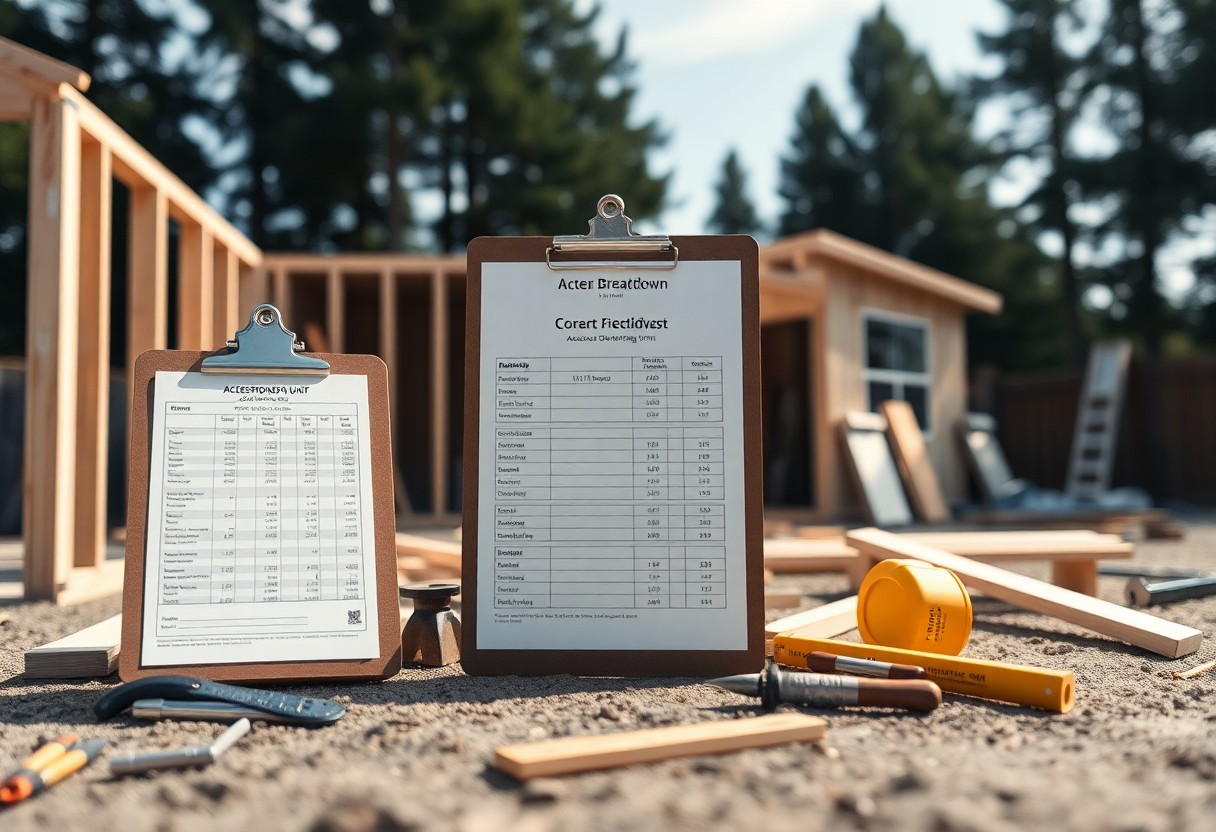
Understanding Accessory Dwelling Units (ADUs)
Your venture into building an Accessory Dwelling Unit (ADU) begins with grasping what they are. ADUs are small, secondary housing units located on a single-family residential lot. They can serve various purposes, including guest housing, rental spaces, or even home offices. As urban living trends evolve, ADUs offer a smart solution to maximize space and provide versatility to your property.
Types of ADUs
Your options for ADUs are diverse and cater to different needs. Below is a breakdown of the most common types:
- Detached ADUs – Standalone structures in your yard.
- Attached ADUs – Converted parts of your existing home, like a basement or garage.
- Converted ADUs – Repurposed existing buildings, such as sheds.
- Junior ADUs – Smaller units built within an existing home’s footprint.
- Mobile ADUs – Portable structures that can be relocated easily.
Knowing these types helps you select the best one that aligns with your space and goals.
| Type of ADU | Cost Range |
| Detached ADUs | $100,000 – $200,000 |
| Attached ADUs | $50,000 – $150,000 |
| Converted ADUs | $30,000 – $100,000 |
| Junior ADUs | $20,000 – $80,000 |
| Mobile ADUs | $50,000 – $150,000 |
Benefits of Building an ADU
Besides increasing your property value, building an ADU provides you with various advantages. These secondary units present an opportunity for rental income, allowing you to supplement your mortgage or save for future investments. They can also accommodate multi-generational living, providing space for family members while maintaining privacy. Furthermore, ADUs enhance your property’s utility, offering flexible living spaces tailored to your needs.
Units like ADUs represent an efficient use of space, promoting not only *affordability* but also *sustainability*. By providing immediate housing options, you help address the *housing crisis* while potentially *increasing your property value*. These benefits highlight why ADUs are becoming an attractive choice for homeowners looking to maximize their investment while improving living arrangements. Ultimately, investing in an ADU can be a smart *financial decision*, offering both immediate and long-term rewards.
1. Assess land and zoning regulations before building.
2. Construction materials significantly impact overall project costs.
3. Hiring skilled contractors can save time and money.
4. Utilities connection adds to the total expense.
5. Budget for permits and inspections during planning.
6. Plan for landscaping and outdoor space enhancements.
Initial Cost Factors
Some key initial cost factors you should consider when planning your ADU project include:
- Site preparation
- Foundation and framing
- Utility connections
- Labor costs
- Material choices
To gain more insight into the How Much Does Building an ADU Cost in 2025?, you need to allocate sufficient funds for these aspects. Perceiving the full picture can help you avoid unexpected expenses later.
Design and Planning Costs
An crucial part of your ADU journey involves design and planning costs. This includes the hiring of architects, engineers, or designers to create plans that meet local codes and your personal vision. The complexity of your design will directly impact the costs, so it’s wise to allocate a budget that reflects your desires and the expertise required.
Permitting and Fees
Fees related to permitting can add significantly to your overall budget. You are likely to encounter various costs, such as application fees and inspection fees, depending on your location.
Hence, taking time to understand these permitting fees is vital for your project’s success. Factors affecting these fees include local regulations, building codes, and the size of your ADU. Navigating through the bureaucratic landscape can be challenging, but ensuring compliance will save you from potential pitfalls down the road. Budgeting appropriately for fees can prevent any delay in your project’s timeline, ensuring you stay on track for a smooth building process.
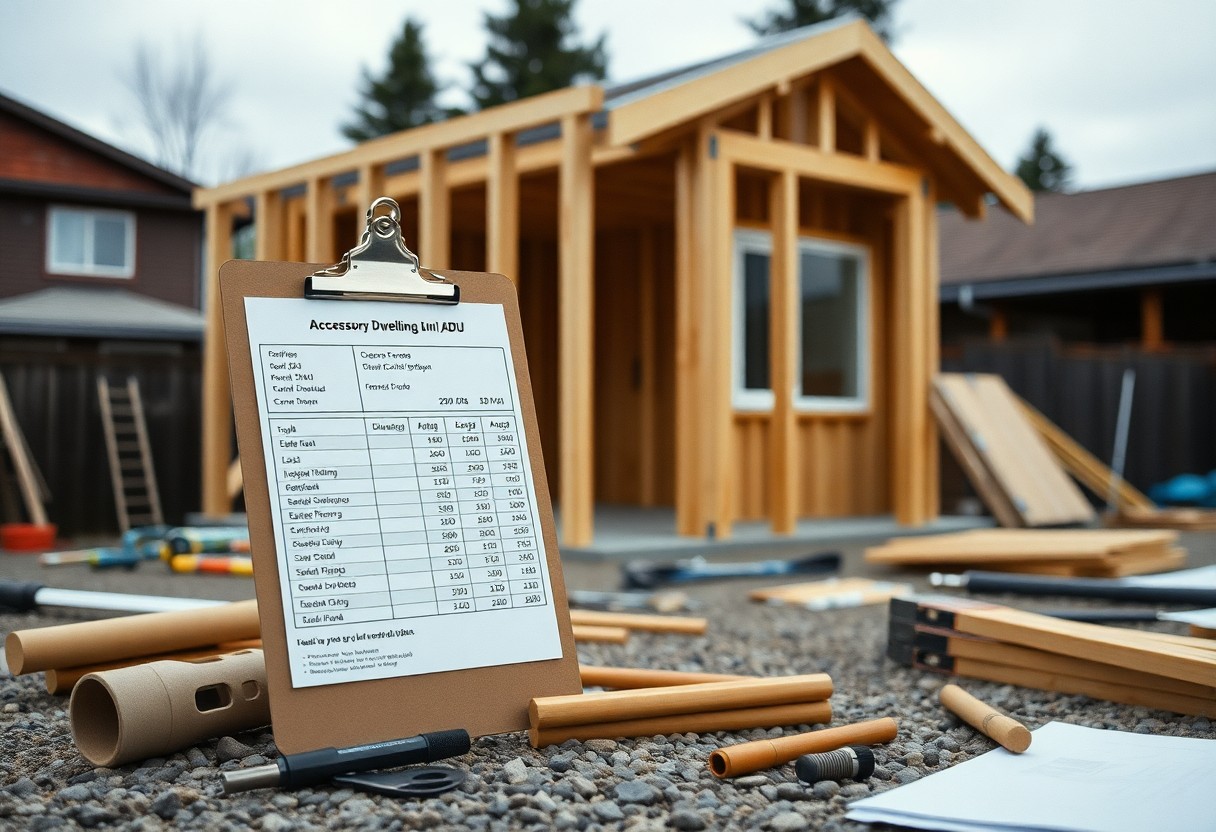
Construction Costs
Not all construction costs are created equal when building your Accessory Dwelling Unit (ADU). You’ll need to account for various expenses, including permits, site preparation, and utilities, which can add up quickly. A thorough understanding of your individual project specifications is necessary to ensuring you stay within budget while achieving your desired outcome.
Materials and Labor
By selecting quality materials, you can improve the longevity and appeal of your ADU, but this will increase labor costs. Budgeting for labor is equally important, as skilled professionals can demand higher wages. Balancing aesthetics with durability will provide you with the best long-term value for your investment.
Choosing a Contractor
Costs associated with hiring a contractor can vary significantly based on their experience and reputation. You should seek multiple bids and examine past work to ensure you don’t overpay. A strong contractor not only manages your project but also safeguards your interests, highlighting their ability to procure necessary permits and mitigate potential issues during construction. Ensuring that they possess the appropriate licensing and insurance can protect you from any unforeseen liabilities. Always verify their references and review their work ethic to ensure your ADU is built to your satisfaction.
Financing Your ADU
For homeowners considering an Accessory Dwelling Unit (ADU), understanding the financing options available is crucial. You will want to evaluate various methods that can help cover the costs, from traditional loans to specific programs tailored for ADU projects. This knowledge can empower you to make informed decisions that align with your financial situation and goals.
Loan Options
Behind every successful ADU project is a solid financing plan. Several loan options are tailored for such builds, including home equity loans, personal loans, and construction loans. Each has its own terms, interest rates, and eligibility requirements, so it’s important to compare them before moving forward.
Budgeting for Your Project
At the outset of your ADU project, developing a detailed budget is vital. This budget should encompass not only the construction costs but also permits, design fees, and potential landscaping. Without a well-structured budget, you risk overspending and encountering unexpected financial hurdles.
It is crucial to conduct thorough research and include all potential expenses when budgeting for your ADU. Start by estimating construction costs, but also consider permitting fees, design costs, and utility connections. Allocate a contingency fund of 10-20% for unforeseen expenses. This helps protect against financial strain and ensures your project runs smoothly. By prioritizing a comprehensive budget, you lay a solid foundation for successfully completing your ADU investment.
Long-term Costs and Considerations
All prospective ADU builders should weigh the long-term costs against the initial investment. While building an accessory dwelling unit can boost property value and generate rental income, ongoing expenses such as maintenance, property taxes, and insurance must be factored into your financial planning. Understanding these aspects upfront will help ensure that your ADU remains a valuable asset rather than a financial burden over time.
Maintenance and Upkeep
One of the key long-term considerations for your ADU is the maintenance and upkeep required to preserve its condition. Regular inspections, repairs, and possible renovations can add to your overall expenses, so it’s important to establish a budget for ongoing care to avoid unexpected costs.
Insurance and Taxes
Any ADU owner must consider how building an accessory dwelling unit impacts insurance and property taxes. You will likely need to update your homeowner’s insurance policy to cover the ADU adequately, which can lead to higher premiums. Additionally, local tax laws may result in increased property taxes due to the additional living space.
In addition to potential increases in insurance and taxes, it’s imperative to research local laws regarding zoning regulations and permits for your ADU. Some municipalities may have specific requirements that could affect both your insurance rates and tax obligations. Understanding how these variables play into your overall financial picture will help you make informed decisions and avoid any unpleasant surprises down the road.
Common Mistakes to Avoid
Now that you’re aware of the factors contributing to ADU costs, it’s vital to steer clear of common pitfalls that could derail your project. From budget miscalculations to overlooking important local rules, these mistakes can lead to delays and increased expenses. By avoiding these traps, you can ensure a smoother, more efficient building experience for your accessory dwelling unit.
Underestimating Costs
Beside the visible expenses of materials and labor, it’s easy to overlook hidden costs like permits, utility connections, and potential delays. Taking a comprehensive approach to budgeting will prepare you for unexpected expenses that often arise during construction.
Ignoring Local Regulations
Behind every successful ADU project lies a thorough understanding of your local zoning laws and building codes. Failing to comply with these regulations can lead to fines, costly modifications, or even project shutdowns.
Plus, neglecting to check on local regulations not only exposes you to potential legal trouble, but it can also significantly affect the overall success of your ADU. Each jurisdiction may have unique requirements related to structural integrity, design guidelines, and occupancy rules. Failing to meet these standards can result in wasted resources and time, and you might have to redo sections of your project to comply. Thus, conducting thorough research and staying informed about local ordinances will ensure your project’s legitimacy and long-term viability.
Summing up
With this in mind, understanding the cost breakdown of designing and building your Accessory Dwelling Unit (ADU) is imperative for effective budgeting and planning. From construction materials to permits and utilities, each expense can significantly impact your overall investment. By evaluating these costs early on, you can make informed decisions, maximizing your project’s potential benefits while avoiding unexpected financial pitfalls. By doing thorough research and planning, you can effectively navigate this journey and ensure that your ADU aligns with your lifestyle and financial goals.
FAQ
Q: What is an Accessory Dwelling Unit (ADU)?
A: An Accessory Dwelling Unit (ADU) is a secondary housing unit located on the same lot as a primary residence. ADUs can take various forms, including basement apartments, garage conversions, or stand-alone cottages. They provide additional living space and can serve multiple purposes, such as housing family members, generating rental income, or increasing property value.
Q: What factors influence the cost of building an ADU?
A: The cost of building an ADU can be influenced by several factors, including the size of the unit, the design and materials used, local zoning regulations, and permit fees. Additional costs may include utility connections, landscaping, and site preparation. Labor costs in your area and the potential need for contractor services also play a significant role in the overall expenses.
Q: How much does it typically cost to build an ADU?
A: The cost of building an ADU can vary widely depending on its size, style, and location. On average, construction costs can range from $100,000 to $300,000 or more. It is advisable to obtain quotes from multiple contractors and factor in additional expenses such as permits, utilities, and design fees to get a comprehensive overview of your budget.
Q: What are the common financing options available for constructing an ADU?
A: Common financing options for building an ADU include traditional mortgages, home equity loans, and personal loans. Some homeowners may also explore construction loans or seek financing through government programs that support affordable housing. Consulting with financial advisors can help identify the best financing option based on individual situations.
Q: Are there zoning regulations that can affect ADU construction costs?
A: Yes, local zoning regulations can significantly impact ADU construction costs. Some areas may have restrictions on the size, height, or design of ADUs, which may necessitate design modifications or additional permits. Understanding these regulations before commencing construction is imperative to avoid unexpected costs and delays.
Q: What are the potential additional costs to consider when building an ADU?
A: Additional costs to consider when building an ADU include permit fees, utility connection fees, landscaping, and site preparation. You may also incur expenses related to inspections and any modifications to existing structures or landscaping. Allocating a budget for these expenses in advance can help ensure an efficient project flow.
Q: How can I optimize costs while building an ADU?
A: To optimize costs when building an ADU, consider options such as using cost-effective building materials, simplifying the design, and managing the project yourself or with minimal contractor involvement. Additionally, exploring prefabricated ADU models can be an economical choice. Thorough planning and research can significantly help reduce unexpected expenses throughout the project.

